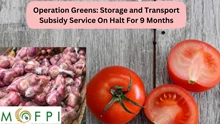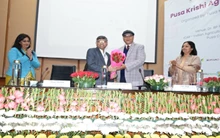
Unprecedented Milestones and Achievements in Last Years
India is now the fifth largest economy in the world and Indian economy has grown by 7.4% an average with inflation around 4.5%. More than 271 million people raised out of poverty during 2006-16. India’s Foreign Direct Investment elevated to US$ 284 billion during 2014-19 from US$ 284 billion during 2009-14. Central government debt reduced to 48.7% of GDP (March 2019) from52.2% (March 2014). GST removed many bottlenecks in the system. These are the very important achievements that Indian economy has achieved in the last couple of years; having so in the recent times there has been certain issues playing the Indian economy for example, the GDP growth rate slow down to 4.5% and inflation rate has crossed 6% barrier which has been given to RBI and has reached 7.3% more than in the month of December and exports have slow down etc. so to overcome this we need to know the reforms which have been announced by government of India in the union budget 2020.

Introduction
Agriculture sector is the most important sector in the Indian economy because it employs huge amount of labor. As per NITI more than 49% population which is working in case of India is concentrated in this particular sector itself and in recent times there have been lot of concerns or issues which are playing in this sector and the very important point; the central government in the budget, basically said that they want to increase consumption or consumption demand because 16% GDP of India comes from the consumption and expenditure itself and the majority of India’s population is concentrated in rural India. As per census 2011, around 2/3rd India’s population lives in rural part of India, so one you want to increase the consumption demand and second majority the population lives in rural India. So what better way to address these particular issues than introducing agricultural reforms in the agriculture sector? As a result of this government of India announced (Finance Minister N. Sitharaman) through this budget tried to change this situation. The finance minister proposed a 16 point action plan in her speech while presenting the budget so as to improve the condition of the agricultural sector and to double the income of the farmers in the next two years.
The Budget included the following points
Total allocation of about Rs 2.83 lack crore has been made for the year 2020-21
-
For Agriculture, Irrigation and allied activities - Rs 1.60 lack crore
-
For Rural development and Panchayathi Raj - Rs 1.23 lack crore
Beneficiaries under PM-KISAN would be eligible for Kisan Credit Card: the government of India provides a payment of Rs.6000 per year in three quarterly installments of Rs.2000 to the farmer families, subject to certain exclusion relating to higher income groups. About 14 crore farmer families are expected to be covered under the scheme.
Central government proposed to encourage State governments that implement three model laws - Model Agri Land Leasing Act, 2016; APMC, 2017 and Contract Farming, 2018 - to ease the marketing of agricultural produce.
Expansion of PM-KUSUM (Pradhan Mantri Kisan Urja Suraksha evem Utthan Mahabhiyan): The government plans on pushing for solar power usage in the farms by promoting solar energy among the farmers, under this government of India aims to generate 25GW of electricity through the usage of solar pumps by 2022. The government through this budget provided the 20 lakh farmers by setting up the stand alone solar pumps and also set up solar irrigation facilities and another 15 lack farmers will be helped to solarise their grid connected pump sets.

Krishi Udaan: will be launched by the Ministry of Civil Aviation on international and national routes. Objective is to ensure that the produce of the farmers will be sold not only in the domestic market but also in the international market so that the return of the farmers will increase.
Financing on e - Negotiable Warehousing Receipts (e - NWR) has crossed more than 6000 crore. This will be integrated with e- National Agricultural Market (e - NAM).
India has an estimated capacity of 162 million MT of agri-warehousing, cold storage, reefer van facilities etc. NABARD will undertake an exercise to map and geo-tag them.
Village Storage Scheme: run by SHGs, which will provide holding capacity for farmers, women in villages can regain their status as Dhaanya Lakshmi. The objective is by developing this the transportation cost is going to come down and losses of food grains also come down.
To resolve the issue of transportation from the farms to the market and to control the prices of products the government plans on setting up a ‘Kisan Rail’ though PPP model, so that quick transportation can be made and it will be set up through public-private partnership. Build a seamless national cold supply chain for perishables, inclusive of milk, meat and fish. There shall be refrigerated coaches in express and freight trains as well.
Promote blue economy: The minister said that milk processing capacity to be doubled from 53.5 million tonne to 108 million tonne by 2025. The government also plans on increasing fish production by up to 200 lakh tonnes by 2022-23 and helping the fishermen. Government will involve youth in fishery extension through 3477 Sagar Mitras and 500 fish farmer producing organizations hope to raise fishery exports to Rs.1 lack crore by 2024-25.
The farmers will be encouraged balanced use of all types of fertilizers to change the ‘incentive regime’ which currently encourages the use of chemical fertilizers.
Provided input sovereignty through Paramparagat Krishi Vikas Yojana and resilience for 6.11 crore farmers ensured under PM Fasal Bima Yojana.
Focus on expansion of micro-irrigation through Krishi Sinchai Yojana, have raised the self-reliance of the country.
Horticulture sector with its current produce of 311 million MT exceeds production of food grains. For better marketing and export, government has proposed supporting states which, adopting a cluster basis, will focus on “one product one district”.
Integrated farming system in rain fed areas shall be expanded and the multi-tier cropping, bee-keeping. ZBNF (Zero-Budget Natural Farming shall also be included. The portal on “Jaivik kheti” – online national organic products market will also be strengthened.

Discussion:
India’s science and technology advancements are mainly limited to space research not so much in agricultural sciences and other fields. For agricultural universities, the allocation is lower than previous year’s budgets. A huge agriculture agenda needs to be backed with greater thrust on research and science to boost farm incomes. The current chemical and input-intensive farming is not sustainable and takes a great toll on human beings, animals and environment health, posing serious sustainability issues and need urgent attention. India needs serious budgetary push and comprehensive approaches at all levels to kick start the much needed organic and natural farming movement in the country before it’s too late. The Union government subsidies chemical fertilizer to the tune of Rs 70,000 - Rs 80,000 crore annually but almost 52 per cent of India’s agriculture is rain-fed; farmers in rain-fed and hilly regions use lower volumes of chemical fertilizers. They don’t benefit from this subsidy. Allocation for MGNREGA has been reduced.
Conclusion
The government plans on reviving the agricultural sector and doubling the income of farmers. The government will focus on zero budget farming which was proposed in previous year budget by the government. As the FM announced her 16-point formula to revive agriculture, the Agri stocks shot up on stock exchanges. Sitharaman expressed hopes that these initiatives will double farmers income by 2022, a target set by Prime Minister Narendra Modi. Usually the agricultural issues can’t be solved by one budget, but with 5 year plan the agricultural issues can be solved.
Author
Ashwini, M.Sc scholar
College of Agriculture, Dharwad
Ph. No. 9164379762
Source of information: Press information bureau








